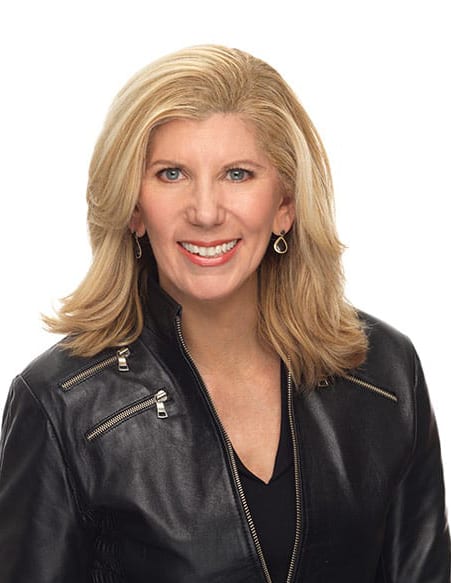My mom recently underwent laser eye surgery, and I really wanted to be there for her. Once upon a time, I would have had a tough choice: Take the day off and fall behind on work, or arrange for other care, which would have been anxiety-inducing for both of us. But thanks to technology and a flexible work environment, I was able to drive her to the clinic in the morning and work from her house while caring for her in the afternoon.

It wasn’t always this easy to integrate work and personal priorities, which is why when I became CEO of Ketchum it was important for me to make workplace flexibility a priority for all of us. A recent Buzzfeed story on “How Millennials Became the Burnout Generation” highlights the broad swath of people at all levels who have been impacted by today’s never-off-the-clock lifestyle. Running a global communications consultancy requires me to ask what peak performance looks like in a world of constant optimization and “second shifts” as moms and caretakers—where even self-care can become exhausting.
In 2019, we updated Ketchum’s workplace flexibility policies to make it easier for employees to work wherever and whenever they work best—whether that’s in the office, at home, or elsewhere. For the second year in a row, we’ve declared this month “Flex February” in order to recognize and celebrate the unique and effective arrangements our people have created across the firm.
The results so far have been incredible. In our most recent employee survey, 77% of our global respondents expressed confidence in their ability to flex and integrate their personal and work lives. In the U.S. alone, more than 10% of our employees work remotely full-time, with most others doing so during at least part of a given week. Our positive experience reflects global trends: According to a report by Zenefits, 77% of employees look for flexibility when they’re seeking a job, with 78% saying that flexible arrangements make them more productive. Employers agree, with 85% of over 15,000 global businesses saying that flexibility has led to greater productivity.
But most gratifying is to hear about the change it’s made in our people’s lives. There are as many different stories about flexibility as there are people who take advantage of it.
Take Bailey Roy, a Business Insider Rising Star in PR from our Analytics team, who wanted to leave behind the challenges of living in New York but keep working with her team; now based in Boston, she’s clearly thriving. “I quickly learned that productivity and success is not measured necessarily by physical presence, but by accountability and continued efficiency in the work I do,” she told me. “Instead of leaving a company due to a place, I was able to leave a place and stay with the company.” Similarly, Stefan Rybkowsksi is technically an employee of our Munich office, but he lives in Berlin, which provides him with not only personal but professional benefits: “I can now give our clients support in the North of Germany—I am able to travel much faster to, for example, Hanover or Hamburg for relevant meetings and events.”
Of course, family is also a major factor in flexible work arrangements. James Coyle, Managing Director of Client Experience in London, and his wife are determined to show their two young children that they can be successful in their careers without being absent: “I leave the office each evening to make sure I get back for bath time and bedtime. I am strict about using my commute time to work and often log in again after the kids have gone to bed. The ability to work flexibly and be 100% trusted and supported to do so sets me up to do my best work.”
Another angle on family comes from Alicia Stetzer, an SVP of Corporate Communications based in Washington, D.C., who is helping her mother through cancer treatment. “I’ve benefited so much from my ability to work wherever she needs me to be,” Alicia says. “By being able to work on the road, at home or in a hospital room, I’ve stayed connected to my team without missing a single doctor’s appointment.”
Flexibility can also benefit wellness, as Kim Essex, the director of our Food Agriculture & Ingredient industry in the U.S., learned when she committed to a healthy 2020. When she fell in love with a mid-morning fitness class, she came up with a plan: “I thought if I could be at my desk between 6 and 7 a.m., I could hold this 9 a.m. hour for a workout. And it worked. I got a jump on the day and, by holding the time on my calendar, I could get to class a few days each week.”
Or there’s Tabea Fesser, an HR Director in Germany who used flexibility to pursue a degree in labor law last year, building her work hours around her class schedule. Or Jessica Mendelowitz, who has experimented with different work arrangements for 15 years, even taking a year off after having her third child, before recently being named the Managing Director of our Purpose specialty in North America. The list goes on and on. With the support of technology and a cultural understanding across the organization about adapting to each other’s needs, flexibility is a game-changer in our people’s lives, allowing them to focus on what’s important and reduce the burnout that comes with the 24/7 demands of the global communications industry.
Nowadays, when I’m on the road multiple days in a row, or if I need to work over the weekend, I may work from home the next day and skip on the commuting time. I try to role model this behavior by “leaving loudly” – instead of sneaking out of the office to make time for personal priorities, I make it known that I’m flexing and encourage others to do the same. Portable technology helps me feel more present with my colleagues around the network even when I can’t arrange to visit in person. I can take an early walk, grab a drink with friends, have lunch with my husband, get a much-needed extra hour of sleep—or be there for my mom after eye surgery. Flexibility offers me the priceless gift of time, as it does for our teams all over the world.



